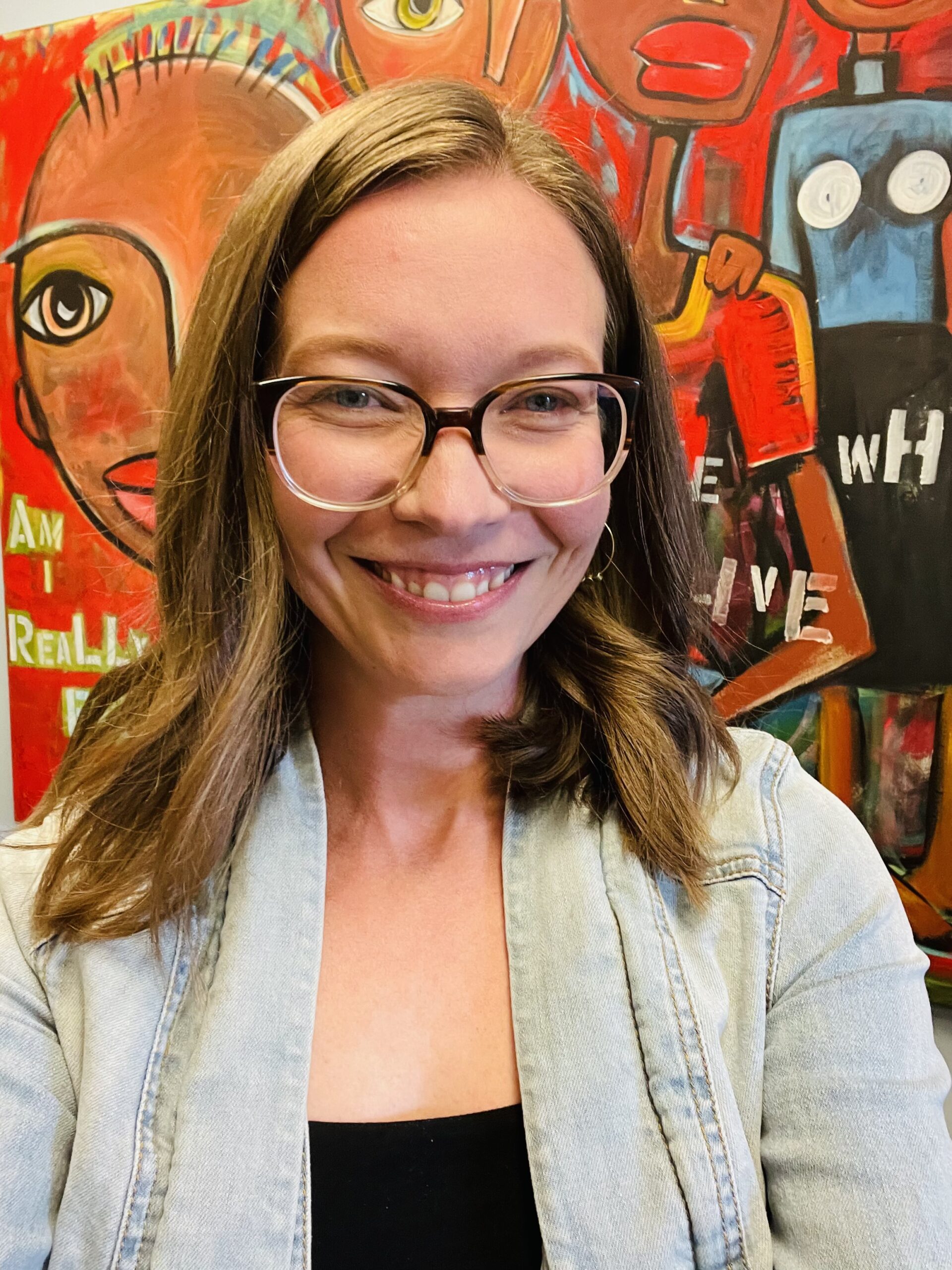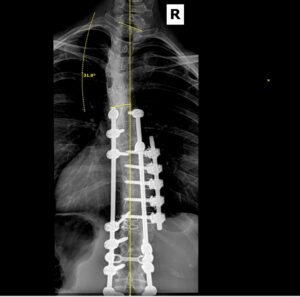
I was just 11 years old when my mom noticed that one of my ribs was sticking out slightly forward compared to the one on the other side. Several doctors’ appointments and x-rays later, I learned that my spine had a significant s-curve, known as scoliosis. To prevent the scoliosis from worsening the doctors prescribed a back brace that I had to wear 23 hours a day. This was tragic news for my pre-teen brain to process. I was trying to figure out my ever-changing body and even worse, I was an avid dancer, spending multiple days a week practicing for hours at a time. The back brace added an extra size to my clothing and was hot and awkward, to say the least. I’m a parent now, and I can’t imagine what was going through my mom’s mind during all of this, but as always, she stayed calm and strong and tried to cheer me up with a whole new wardrobe of wide leg jeans (that I had wanted forever but was never allowed to get) and baggy sweaters… Thank goodness it was the ‘90s and these were on-trend, ha!
During the next three years I continued to dance and wore my back brace religiously. We moved to Sioux Falls, SD shortly after my diagnosis in the middle of my 6th grade year. I tried my best not to mention my back or brace, as if not talking about them would keep kids from noticing. Socially, it was a tough few years. Even though middle schoolers were routinely screened for my condition, (so people knew what it was,) it became very clear that I was not “normal” and needed to be fixed. My family and I learned more about scoliosis at each follow up appointment. We also began to realize that the back brace was not doing its job of keeping the curvature from progressing.
The summer after I turned 14 my curve had increased to over 50 degrees and my ribs were rotating to the point that if left without further treatment the malformation of my spine would eventually begin to crush inner organs and cause breathing issues. I was told that I would need to have surgery to fuse several vertebrae and that the surgeon would insert metal rods to correct the curves. 
I was heartbroken. A fused spine meant I was done dancing. However, I was given a glimmer of hope as my surgeon decided to try a newer version of the surgery that would allow for more mobility than the typical method. For this procedure, the doctor removed one of my right ribs, deflated my right lung, fused several vertebrae, and inserted two titanium rods with screws to secure the curve.
Shortly after the surgery we moved to Tucson, There I learned that the curves above and below the spinal fusion continued to progress. I ended up back in a brace in hopes that it would support my spine. Around this time, I stopped dancing due to the lack of flexibility, but I did find my place in marching band and color guard.
Recently I was asked if I ever felt like there was a place during my school years where I received the accommodations I needed for my scoliosis and spinal fusion. My immediate answer was to think about negative experiences, like how I had to complete Independent Study PE because I was unable to participate in many of the normal activities, or how my driver’s ed teacher physically tried to turn my torso so I would look over my shoulder in one of those car simulators, even though I had attempted to advocate for myself many times in his class. As I thought more and more though, I realized that color guard and marching band were my places of solace, where I felt successful, and where the people around me, peers and adults, understood my difference and helped me to find workarounds so that I could still successfully participate. This gave me a huge boost of confidence as I moved into young adulthood.
After college I moved to the Seattle area for graduate school and went in for a regular annual x-ray to check my back. The curves above and below my fusion were much worse, and I was in constant pain. The treatment meant a second surgery as soon as possible. This time the surgeon opened my back and added fusions from vertebrae T4-L1 and more titanium rods and screws. The recovery was much easier the second time around and my pain subsided substantially.
Over a decade later, my scoliosis is fairly stable. During that time, I had a healthy pregnancy and mostly uncomplicated birth of my daughter, though I was told from the get-go that an epidural was likely not an option due to my fusion and hardware. I also had to avoid high impact activities, anything involving twisting, and heavy lifting.
I rarely talk about my scoliosis or spinal fusion with others unless there is something that would clearly prevent me from participating, or if people are comparing “good scar” stories. I have recently realized, however, the importance of being able to share my story openly, talk about the challenges, and ask for help. I have never been one to hide my scars, but I am overly aware of how clothing fits (aren’t we all…) and how my left shoulder sits higher than my right in every photo and my left rib still juts out more than the other side. I continue to work on accepting these things, but also have found some amazing support through social media groups like Forever Fused on Facebook and Instagram accounts that focus on exercise for those with fusions. I have gained the courage to tell each of my yoga teachers about my fusion so they understand my strange modifications during their classes rather than avoid going to yoga like I used to. I also have learned pain management strategies, know when to move my body vs. rest, and have a fantastic chiropractor who is an essential part of my wellness routine. I worry about the future as I hear stories of revision and hardware removal surgeries. The journey continues, but for now, I have found strength in my curvy and not-so-perfect spine, and I am grateful for this space to share my story.